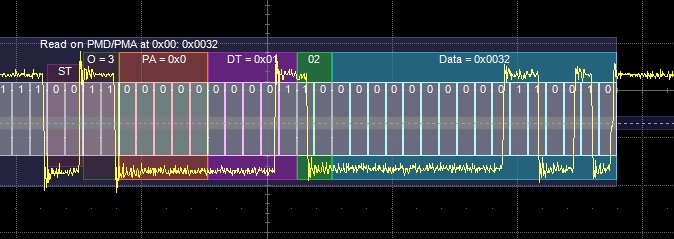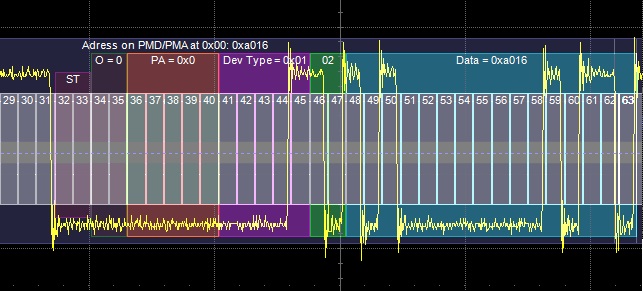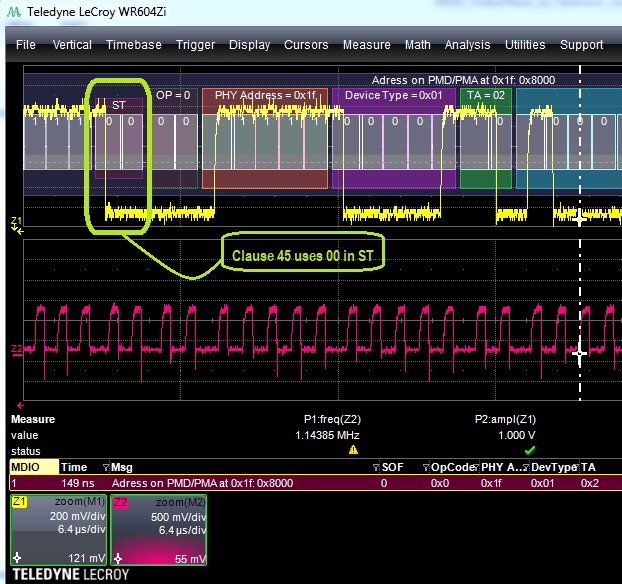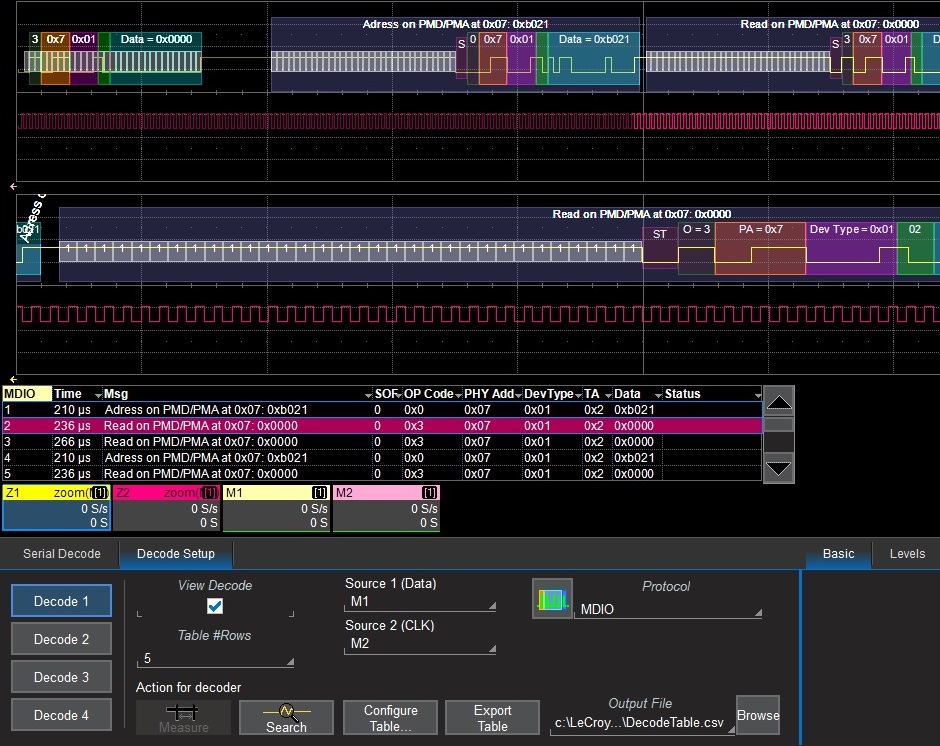| MDIO signals decoded (examples) |
|
Link |
Explanation |
| 1 |
 |
Exemple of an MDIO transaction, fully decoded |
| 2 |
 |
Exemple of several MDIO transaction, fully decoded. Note that in this case the 1 MHz clock is only active during the transactions. |
| 4 |
 |
Another exemple of several MDIO transaction, fully decoded. In this case the clock is continuous, at 4 Mhz, and active also in-between transactions. There are no structural differences between messages transmited using a continous clock and a bursted clock |
| 5 |
 |
When the bit labeling options is selected, every bit is decoded, and can be traced to its physical layer. |
| 6 |
 |
As an alternative, the bit index can be shown, numbered from 0 to 63 for an MDIO message. This feature helps maping the fields to their contributing bits and is particularly useful when chasing bit banging issues |
| 7 |
 |
This image shows a 1 MHz Clause 45 transaction. Amplitude is relatively small, and the 2 initial 0 bits manifest the Clause 45 encoding. |
| 8 |
 |
As exemplified here, it is also possible to decode MDIO measured on digital lines. This presents an advantage when the analog channels are used for other signals. |








